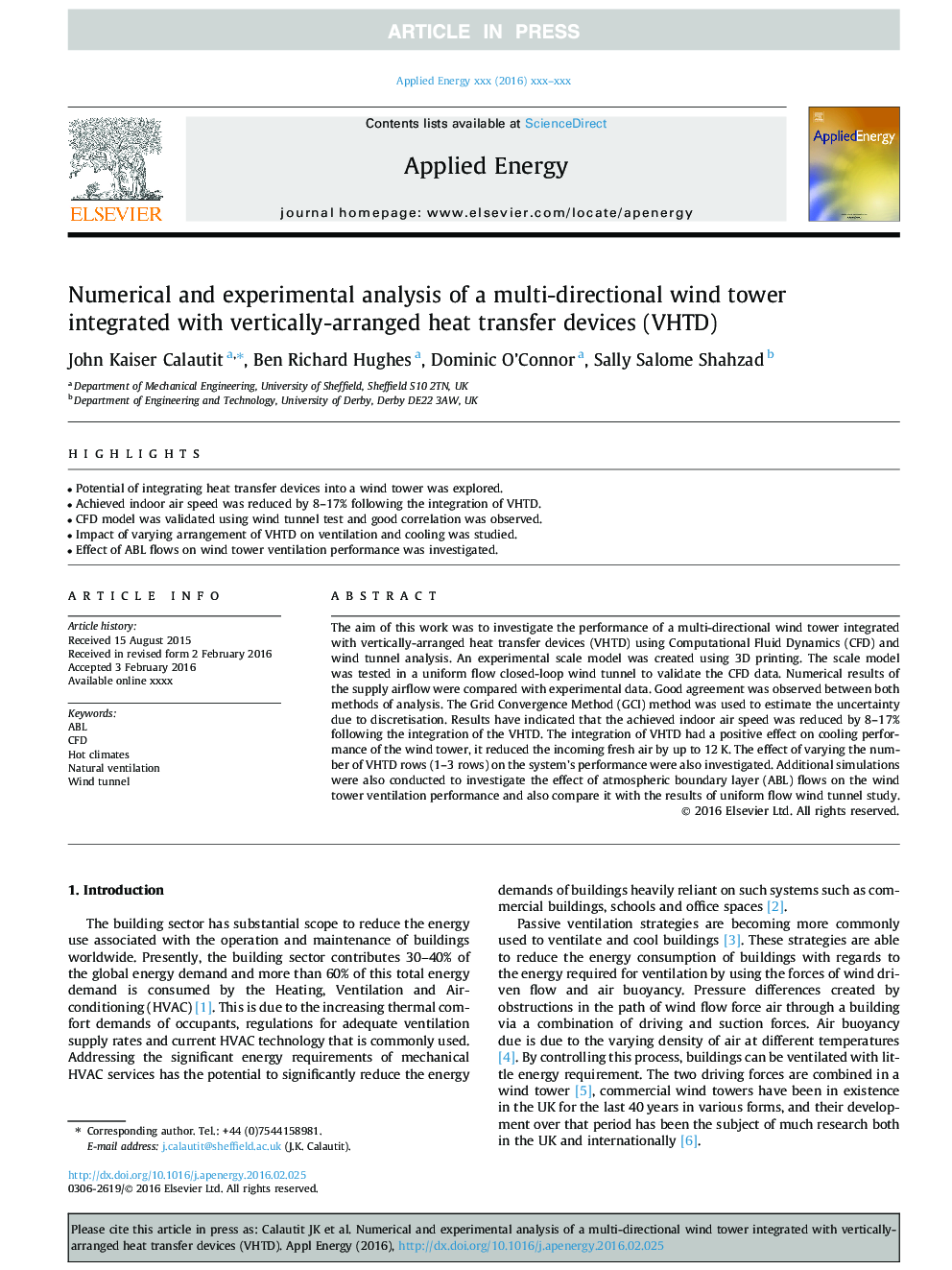| Article ID | Journal | Published Year | Pages | File Type |
|---|---|---|---|---|
| 4917048 | Applied Energy | 2017 | 16 Pages |
Abstract
The aim of this work was to investigate the performance of a multi-directional wind tower integrated with vertically-arranged heat transfer devices (VHTD) using Computational Fluid Dynamics (CFD) and wind tunnel analysis. An experimental scale model was created using 3D printing. The scale model was tested in a uniform flow closed-loop wind tunnel to validate the CFD data. Numerical results of the supply airflow were compared with experimental data. Good agreement was observed between both methods of analysis. The Grid Convergence Method (GCI) method was used to estimate the uncertainty due to discretisation. Results have indicated that the achieved indoor air speed was reduced by 8-17% following the integration of the VHTD. The integration of VHTD had a positive effect on cooling performance of the wind tower, it reduced the incoming fresh air by up to 12Â K. The effect of varying the number of VHTD rows (1-3 rows) on the system's performance were also investigated. Additional simulations were also conducted to investigate the effect of atmospheric boundary layer (ABL) flows on the wind tower ventilation performance and also compare it with the results of uniform flow wind tunnel study.
Related Topics
Physical Sciences and Engineering
Energy
Energy Engineering and Power Technology
Authors
John Kaiser Calautit, Ben Richard Hughes, Dominic O'Connor, Sally Salome Shahzad,
